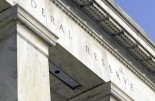Swissquote Bank: Trade headlines, Fed expectations support risk taking
Swissquote Bank: Trade headlines, Fed expectations support risk taking

By Ipek Ozkardeskaya, Senior Analyst, Swissquote Bank
Another week of trading starts on a positive footing, buoyed by a range of news items pleasing investors. The first came from the long-awaited US inflation data released on Friday after weeks of official data drought during the government shutdown. Headline inflation advanced to 3% in September – the highest since early 2021 and still well above the Fed’s 2% target. However, the figure was slightly lower than analysts expected, while core inflation eased from 3.1% to 3% over the same month.
So, despite the uncomfortably high absolute figures, the fact that they came in softer than expected reinforced expectations for a 25bp Federal Reserve (Fed) rate cut this week, with markets also assigning roughly a 93% probability to another cut in December. As such, the US dollar and 2-year Treasury yield came under pressure on Friday but are both firmer this morning amid renewed risk appetite and optimism that the US and China are inching closer to a trade deal. Early reports suggest the two sides have reached an initial agreement on major issues, including export controls, shipment levies and fentanyl, raising hopes that Thursday’s meeting between Trump and Xi could yield tangible progress. The CSI 300 is up about 1% at the time of writing, also supported by signs of stabilizing foreign investment flows and improved industrial profits.
In the US, the combination of softer-than-expected CPI figures, the prospect of two more rate cuts, and trade optimism pushed the S&P 500 to a fresh record high on Friday. Futures are pointing to a bullish start today. Earnings season, too, is shaping up well: around 30% of S&P 500 companies have reported so far, and 87% have delivered a positive EPS surprise, while 83% have beaten revenue expectations, according to FactSet. The blended year-on-year earnings growth rate for Q3 stands at 9.2%, marking what would be the ninth consecutive quarter of earnings growth — well above the roughly 5–6% growth expected at the start of the season.
This week, the tech heavyweights — Microsoft, Alphabet, Meta, Apple and Amazon — are set to report Q3 results. Because they account for roughly a quarter of the S&P 500’s total market capitalization, invest heavily in AI and have shouldered the market rally since early 2023 despite wars, rate hikes and global economic headwinds, their results will be crucial in determining whether the tech-led rally can extend further.
Investors are looking for:
- Concrete payoffs from AI investments,
- Growth trends in data centers and AI-related businesses, and
- Commitments to continued spending, as one company’s investment is another’s revenue stream.
On Friday, Intel rose as much as 8% in pre-market trading after beating expectations, but the enthusiasm quickly faded as investors questioned whether the company’s revival is policy-driven rather than organic. Washington wants Intel to reclaim its role as America’s semiconductor champion and anchor Trump’s push to reshore chip manufacturing. That ambition has spurred cooperation with AI giants such as Nvidia and SoftBank, creating periodic price spikes. Yet for now, Intel looks more like a strategic instrument of industrial policy than a pure investment play. Government support may keep it buoyant, but whether this will translate into sustainable, profitable growth remains an open question.
Elsewhere, both the Stoxx 600 and Nikkei 225 hit fresh all-time highs. In Europe, stronger-than-expected PMI readings and the dovish Fed narrative lifted risk appetite, helping the index to new highs. This week, preliminary October CPI data are expected to show a slight moderation in inflation, and the European Central Bank (ECB) is widely expected to hold rates steady. In Japan, Takaichi’s calls for looser Bank of Japan (BoJ) policy and increased fiscal spending on tech, defense, nuclear power and cybersecurity continue to fuel the Nikkei’s exponential rally. The USDJPY is extending gains toward 153, with scope to test the 155–160 range if policy divergence persists.
Meanwhile, the EURUSD remains under pressure from French political turmoil.
Moody’s affirmed France’s credit rating on Friday but revised its outlook to negative, while the Socialist Party has threatened to topple the fragile government as soon as this week. The widening spread between French and German 10-year yields should keep EUR/USD capped below its 50-day moving average, now near 1.0690.
In the UK, last week’s data painted a mixed picture: headline inflation unexpectedly eased to 3.5%, but retail sales surprised to the upside for a fourth consecutive month, leaving the Bank of England’s (BoE) rate-cut debate as muddled as ever. In all cases, sterling remains unappealing heading into next month’s Autumn Budget.






